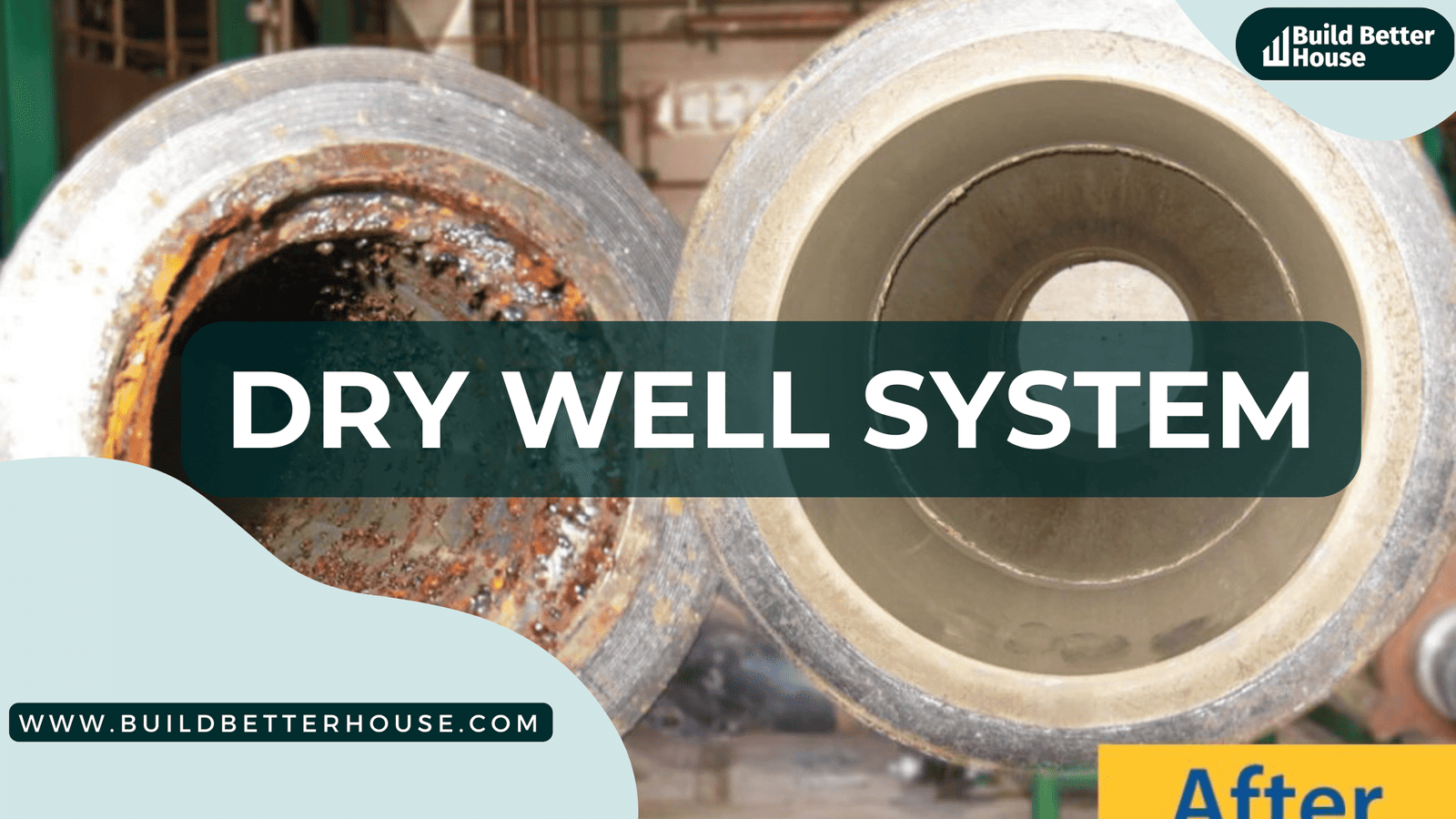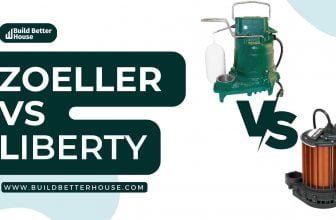What Is A Dry Well System And How To Build It?

Since uncontrolled stormwater runoff frequently leads to flooding and erosion in localized areas – dry well systems are one method homeowners use to collect and control rainwater runoff. However, a lot of people are unaware of dry well systems and their significance.
On that note, we’ve composed a blog post to help you answer the question, “What is a dry well system?” Here, we’ll review all the vital details a new homeowner needs.
What is a dry well system?
A dry well system is an underground construction that redirects undesired water to a different site. The walls of dry well systems are permeable. This method allows water to percolate through the walls and lead further beneath.
Generally, dry well systems are installed in basements, parking lots, and yards. They are gravity-powered and can connect to more than one pipe or source.
There is no one exit since the tiny permeable holes are distributed throughout the structure. This provides for a slow and consistent release that requires little upkeep. A vast reservoir or tank is frequently needed so that the water may escape. When it rains, the tank fills if it’s not swiftly drained.
How does the dry well system function?
Since dry well system is a great way to manage excess water runoff from hard surfaces such as roofs, driveways, and walkways, this system is essential for helping to protect your home from water damage and flooding. Essentially, a dry well system collects and transports excess water from your home to a designated area for safe discharge.
The dry well system works on a simple concept; water runoff is directed to a perforated chamber filled with stones or gravel when it rains. This chamber acts as a filter to remove any debris from the water. The water then collects in the chamber and is slowly released into the ground, which helps to absorb the water.
The stones or gravel act as a natural filter, trapping large particles while allowing smaller particles to pass through. This helps to reduce the number of pollutants that are entering the ground. Furthermore, it helps to prevent flooding, and a dry well system can also help reduce erosion and act as a natural water filtration system.
A work of this magnitude is expensive—about $25,000—but the homeowners were not surprised. The necessity for a dry well system was part of the original plan because the additional garage restricted the amount of usable land that usually helps absorb rainfall.
Is a dry well system ideal for your home?
Residents in some complexes may be required to install one or more dry wells to lessen the load on municipal storm drains. If dry wells are not required in your area, you can use soil testing and assistance from your local building authority to assess whether a dry well system might benefit your setup.
An essential criterion in deciding whether your yard would benefit from this in-ground installation is the rate at which the soil can absorb water. To determine this rate, run a percolation test in your yard, which entails drilling a hole, filling them with water, and then recording the rate at which the water seeps into the land.
Your local extension office can provide detailed instructions for performing a perc test on your property. A location where water drains fast is a good candidate for a dry well, whereas homeowners with thick clay soil and slower drainage will likely need to find another solution for transferring stormwater.
Dry well system: Dimensions and materials
If municipal rules do not restrict the size and quantity of dry wells, it is customary to install one for each downspout. Additional dry wells may be required if features of your landscape, such as runoff from a road or large patio, are causing a drainage problem.
Dry wells should be large enough to collect runoff without overflowing during average rain. You can create a dry well system as little as a couple of feet in depth and diameter or as large as several feet wide and several feet deep, depending on the average quantity of stormwater you need to control.
Depending on your preference, you can cover a dry well system with turf for camouflage or an open grate for simple monitoring.
What is a dry well: Installation fundamentals
Assuming your soil passed a perc test, you’ll want to place a dry well system or two along storm water’s natural drainage course through your yard—but no closer than 12 feet from your home’s foundation. You can create a simple swale leading to the collection pit or a french drain to prevent water from carving a rut after it exits the downspout.
Your plan should also include methods for dispersing extra water during rain events that cause your dry well system to overflow, such as an overflow line that connects to a storm sewer.
Dry well installation cost
When it comes to the dry well installation cost, it all depends on the size of the project and the type of dry well system you choose to install. Generally, the cost of a dry well system installation can range anywhere from $1,000 to $20,000 or more, depending on the complexity of the project and the number of dry wells involved.
The dry well installation cost also depends on the type of dry well system you select. For example, a dry well system with more than one dry well may cost more than a single dry well system. Additionally, the size of the dry wells and the material used to construct the dry wells can also affect the installation cost.
If a contractor or a professional installer is hired to perform the installation, the cost may be higher than if you attempt to do the installation yourself.
The local permit fees, excavation costs, and other related expenses may also affect the dry well installation cost. Overall, a dry well installation cost can vary significantly depending on the project’s complexity, the type of dry well system chosen, and the other related expenses.
When installing a dry well system, it is essential to consider all the relevant costs before you begin the project. Doing so can help you determine the most cost-effective solution for your dry well installation.
How to build a dry well?
Following the removal of 100 yards of material to prepare and dig the hole, landscaping fabric is spread on top of the hole to prevent debris, soil, and subsequent fines from filling in and clogging the dry well.
- The pit is filled with 12 inches of stone to serve as the foundation.
- On top of the stone are concrete galleys, also known as dry wells. According to the engineers’ recommendations, this project requires 8 galleys.
- Once the galleys are in place, the excavation is backfilled with gravel to establish the dry wells.
- The stone will eventually cover the entire system—about 12 inches of gravel will be poured on top of the galleys.
- Take-outs are added and connected to the dry wells. These convenient access points allow the homeowner to clean away debris that may clog the drains.
- A trench drain will be cut at the driveway’s base and connected to the tanks and the home’s downspout.
Follow the above installation steps and get your work done efficiently and correctly.
Dry well system: Considerations
The percolation test, sometimes known as a “perc test,” evaluates how quickly water drains into the earth. The better the placement for a dry well, the faster the water drains into the land within a particular time.
Calculating impervious surfaces: The greater the number of non-absorbent surfaces on a construction site, such as driveways and roof surfaces, the larger the dry well system is necessary to manage all excess runoff and minimize flooding and erosion efficiently.
Capability for a worst-case scenario: This system is large enough to withstand a 100-year storm, which can drop 9″ of rain in 24 hours. A project of this size should be left to the specialists.
Dry well system: Maintenance
Knowing a dry well system and how to install it isn’t enough; it is also essential to know its maintenance requirements and adhere to them appropriately.
Since dry wells can be installed with or without gutter diversion, the upkeep for your well will differ from that of another. Here are a few things you can do to keep your dry well system in good condition.
Clean the gutters
If your dry well system is connected to your gutters, as is usual, keep them clean. From April to November, clean them out regularly or monthly.
Don’t let the snow pile up
Check for snow and ice damage regularly during the winter months. Pipes can be weakened by ice regardless of their material. Please do not allow it to accumulate on pipes or drainage systems.
Clean the pipes
Cleaning the pipes is especially important if you are experiencing issues. You need to inspect the chamber to see if there are no pipes. If the drain isn’t functioning correctly, grab a decent snake and thoroughly clean the gutters.
Make sure anyone wandering through your yard is mindful of where the dry well system is; minor traffic won’t hurt, but too much can be detrimental.
Remember these easy maintenance tips to secure your dry well system assignment!
Wrapping up
One of the most excellent drainage solutions is a dry well system. A dry well system, also known as a soak well, is an underground structure that dissipates undesired water, most typically stormwater runoff, into the earth, where it combines with the local groundwater.
Since now, you’ve been aware of a dry well system and all the necessary criteria. Use this guide today to make the best decision for your home!
Read more:
Best Drainage Pipe For Driveway And Guide For Installation
Best Sump Pump For A Pond: How To Install + Benefits
5 Best Sump Pump For Pool In 2023
6 Best Aquarium Sump Pumps: Which One Is Best For You?






